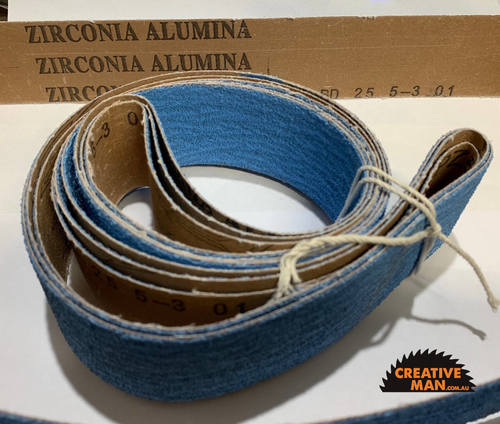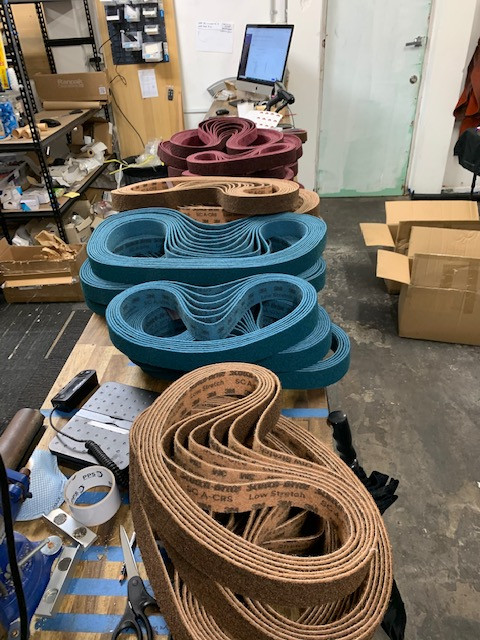Beginners Guide to Grinder Belts: What belts to buy?
Abrasive belts can be a confusing topic, at least if you are not able to pop into a shop for some good advice.
So here is a quick guide to get you going. This is not a long, exhaustive list covering lots of specialist belts for specialist makers, but a good middle-of-the-road list of belts that works well for us - and might work well for you.
The 10 second summary:
- For steel: Ceramic belts in 60 and 120 grits, they just last longer
- For handles: Zirconia belts, less grit on the belt stops them clogging (also in 60 and 120 grit)
- For finishing: Aluminium oxide and/or J-Flex belts from 180 to 400 grits.
- Optional: For satin grinder finish, consider cork belts, scotch bright belts or any of the 100 other types of "special finish" belts.

Why we recommend these belts:
- Ceramic belts last longer - and cost more - than your average hardware store belts. The belts are coated with small ceramic particles and these are HARD. The positive is that they cut for a long time, the negative is that to stay sharp they need to be used at FULL SPEED. If you turn the speed down for control, these are not the belts to use. So for profiling the blade, for cleaning up, and for bevel grinds: Go for ceramics. We sell 60 and 120 grits only, these are the only grits we use and that might work for you as well but there are even coarser grits available, and even finer but we then tend to turn the speed down and swap to J-flex belts.
- Zirconia: These last for a long time if used only for handle materials, and they excel at just that. They make short work of wood, micarta, antler, G10 and acrylics. We sell only 60 and 120 grits, just because these are the only grits we have found any use for when actually making knives.
- J-Flex are nice, soft belts for finishing the bevels and cleaning up the blade. They are great at overhanging the platen 5+ mm, creating a round edge to grind towards for blending lines, cleaning up the plunge line, etc. They also work great on the handle, removing coarser scratches from the Zirconia belts. Alu Oxide also work well, the J-flex are just a softer version and we tend to go for the J-flex to clean up.
- If not going straight to hand-sanding, there are LOADS of options for fancy machine finish. The option we went with was a scoth bright belt type, kind of like a rough kitchen sponge. They clean up minor scratches and give a good machine finish. On forged blades they clean the blade up, while still leaving some forge scale behind for that nice, rustic look. They are expensive but seems to last for years and years.
What belts you will like to use might be different to what we use at Creative Man, and for many makers it changes over time. These are just our recommendation based on what we use ourselves. After having tried quite a few brands and hyped specialty finish belts, these are the 3 we reach for: Ceramics for steel, Zirconia for handle and some kind of finishing belt to smooth things out on the blade, and then using the slack belt for cleaning up the handle.
Is there a belt we missed that is something you would not want to be without? A new specialty-finish belt we should try? Let us know on Sales@CreativeMan.com
Recent Posts
-
Why Bed The Tang In Epoxy - Then Knock it OFF Again.
What is "Bedding the tang"? Bedding the tang means gluing a stick-tang blade into the handle block i …21st Mar 2025 -
Marble Leather - How to Dip Dye Veg Tanned Leather
This was my first experiment with hydrodipping or dip dying leather, and it came out pretty cool! I …14th Mar 2025 -
Make Burl Wood POP!
Staining wood with leather dye. or "How to make burl wood really pop". This technique really only wo …8th Mar 2025




